Oh, Cologne

Cologne, or Köln as it is known in Germany, was founded in the 1st century AD as a colony of the Romans, and there are still some vestiges of their presence remaining today. Situated on the Rhine river, it obtained UNESCO World Heritage status in 1996 largely due to its Kölner Dom, or Cathedral, which was begun in 1248 but not completed until 1880! The cathedral is dedicated to St Peter and has room to accommodate over 20,000 people. It is the largest Gothic church in Europe with huge spires that also make it the 2nd tallest church in Europe. Inside, the gold shrine alleged to hold the relics of the Three Magi, or Wise Men, drew countless pilgrims to the city; this influx of capital financing the cathedral’s construction. It has become Germany’s most visited building.

Cologne is Germany’s 4th largest city with over one million inhabitants. It was heavily bombed during WWII, with 72% of it destroyed. Although the cathedral was badly damaged, it still stood as a recognisable landmark for Allied bombers. Today it remains a point of orientation as it can be seen from all over the city. The other major landmark of the city is the Hohenzollern Bridge, with a total of 9 iron arches spanning the Rhine over the three sets of railway tracks. It is the most heavily used railway bridge in Germany with over 1,200 trains crossing each day.
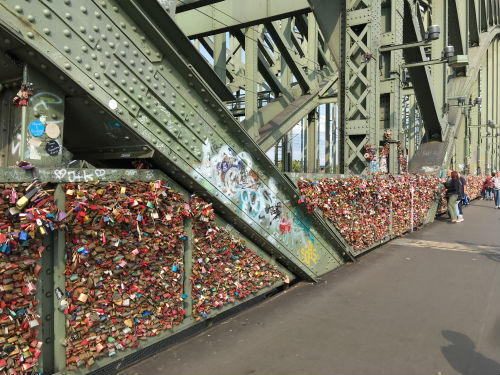
Along the bridge it has become popular to attach love padlocks on the fence between the footpath and the railway lines. They are of all colours, shapes and sizes, some ornately decorated or engraved. The custom is to then throw the key in the river. Crossing the river to the suburb of Deutz provides a wonderful view of the Cathedral and the Old City.
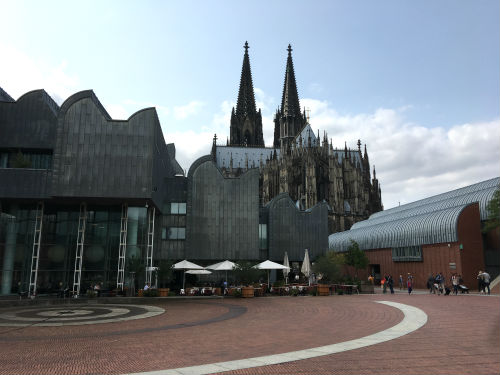
Not far from the bridge and a short walk to the cathedral is the Heinrich Böll square (named after the writer who won a Nobel Prize for Literature), which effectively forms the roof over the Cologne Philharmonic Hall. Naturally, when a concert is in progress, the square is off limits to pedestrians! The square also provides access to the Museum Ludwig, which houses one of the most important collections of modern art in Europe and nearby, the Roman-Germanic Museum which features art and architecture from the city’s distant past, such as the world’s largest collection of Roman glass.
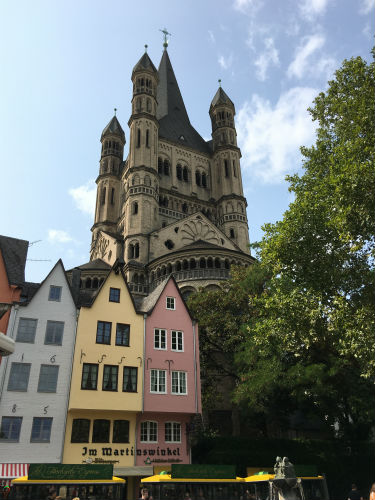
The unusual Romanesque church of Great St Martin is a distinctive feature of the skyline above the Old City, with its four stocky towers. Its foundations date from Roman times, with various additions completed during the 12th and 13th centuries. It was substantially damaged during WWII and its restoration was not complete until 1985.
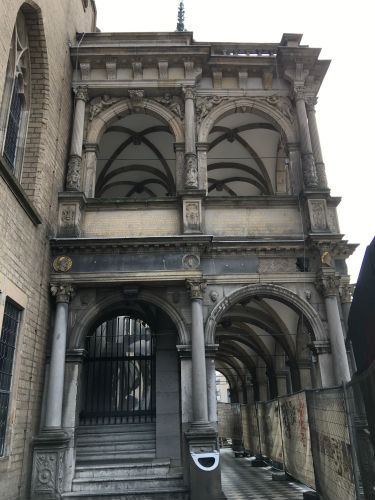
Archeological excavations beside the old city hall (Rathaus) revealed that it had been built on the site of the Roman Praetorium. Although parts of it were built over successive periods, and the tower restored following the bombings, it can still claim to be Germany’s oldest city hall. The Renaissance Loggia functions as the entrance to the council’s main hall at ground level, and as a balcony for the main hall on the upper floor.

The Alter Markt is a historic marketplace near Cologne’s city hall. The square is popular for its many cafés with outdoor terraces. During the Roman era a port was located here while during the late Middle Ages the square was also the site of public executions and occasionally jousting tournaments were held here.
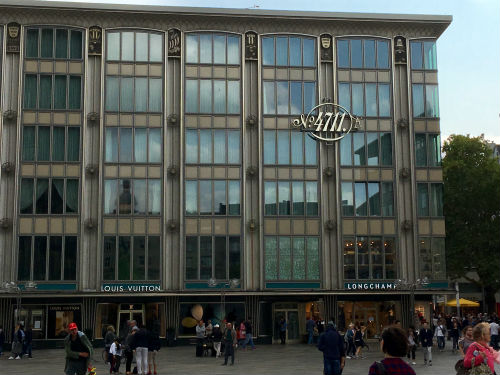
Cologne is also synonymous with the famous Eau de Cologne no. 4711. The number 4711 refers the number assigned to the original house during the French occupation at the end of the eighteenth century.
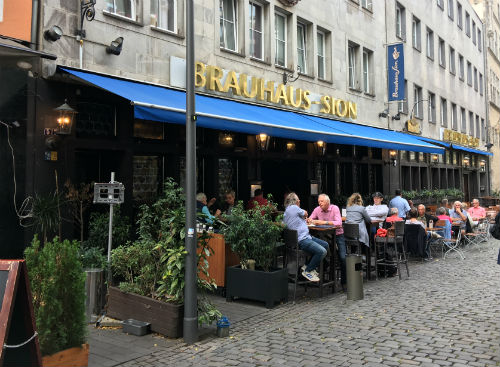
South of the Cathedral there are many restaurants and beer halls serving the other famous liquid of the area – Kölsch beer – a light but slightly bitter brew. Was it tired feet or a dry throat that caused Hubby to rest here at Sion while I roamed the streets taking photos?
Cologne was our first stop in Germany on our Rhine/Main/Danube cruise. Our next day promised to provide us with many more opportunities for photos of picture book scenery and for sampling the local wines as we cruised through the Middle Rhine Valley and the Rheingau wine region.



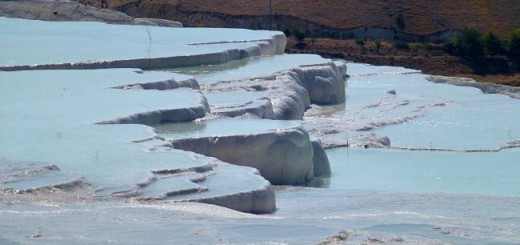


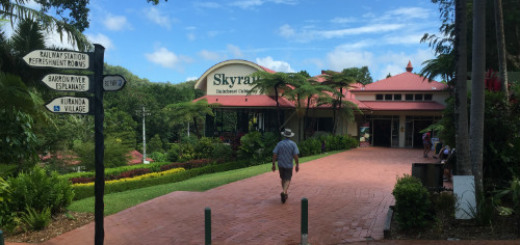
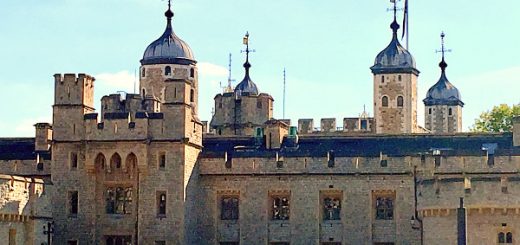


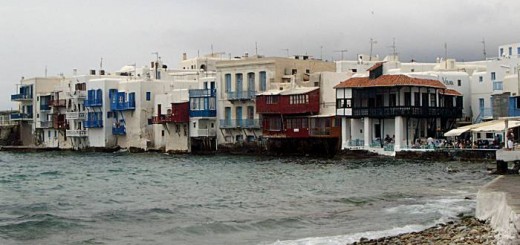




















You may recall adverts in the 1970s in Australia for 4711 ice cologne.
We visited Germany in August 2019. I saw signs to the fast train (Inter Capital Express) to Cologne which read “ICE KOLN”. This reminded me of the 1970s adverts!
Hi Roger, I sure do remember- in fact I still have a bottle!